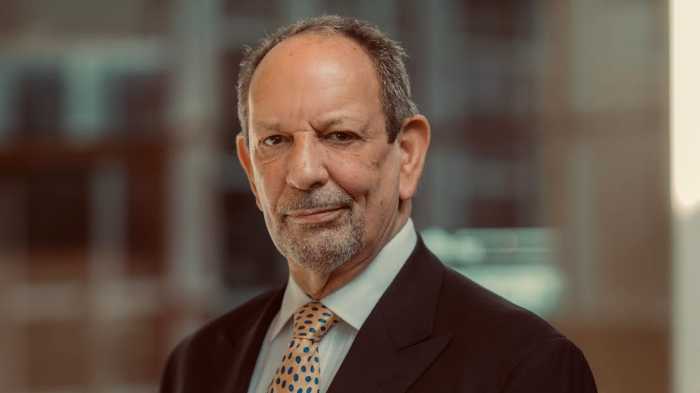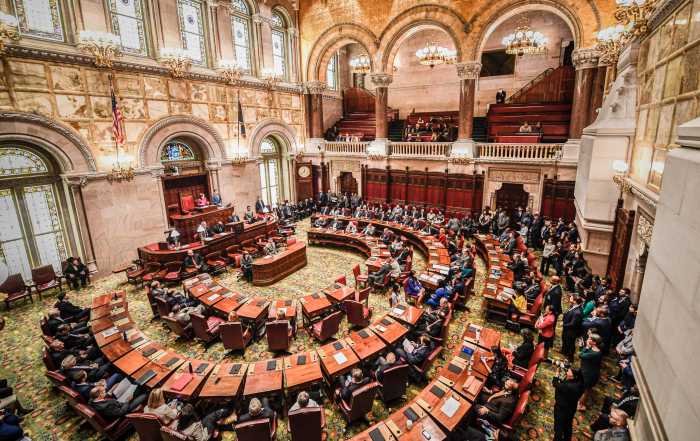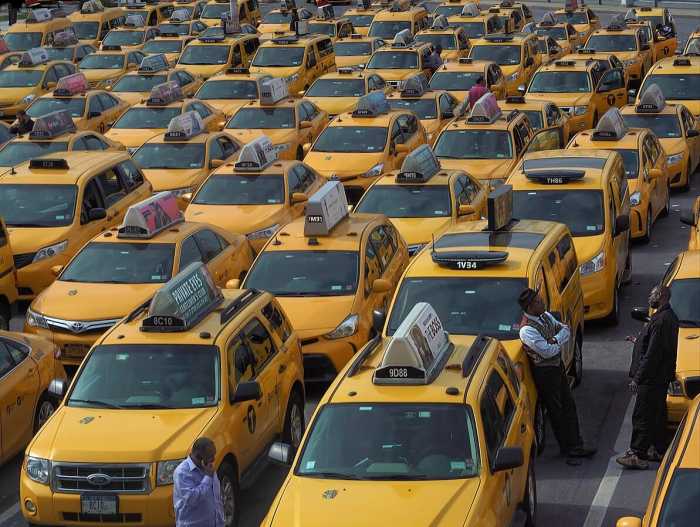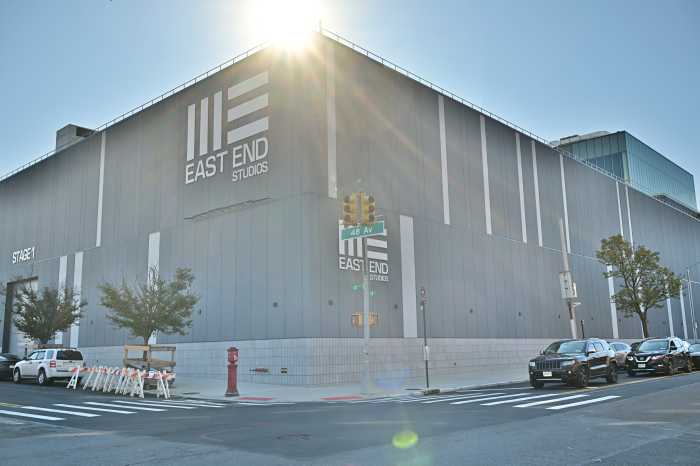
It has been a difficult time for bikers in New York City with a series of cyclist fatalities amid continued calls for more and better bike lanes.
The central problem is that NYC’s streets were not made with cyclists in mind. This is a key takeaway from Evan Friss’ book “On Bicycles: A 200-Year History of Cycling in New York City,” which came out earlier this year. Friss notes a 1973 city report that described bikes as a “step-child of the transportation world,” neither here nor there, a mode of transit that had bursts of popularity but never sustained enough to be treated like motor vehicles, with all the associated street infrastructure that cars enjoy.
Friss’ history covers the various booms of biking in NYC, from “boneshakers” in the 19th century to the bike messenger wars in Mayor Ed Koch’s New York and the lane-building frenzy of former transportation chief Janette Sadik-Khan.
amExpress spoke with the James Madison University professor to find out what history suggests might happen next.
What drew you to biking?
I was living in New York going to graduate school, and I was using my old beaten up yellow bicycle as a means to move around the city while I was studying urban history and the history of urban planning. They kind of went hand in hand. On my bike, I was thinking about all the ways in which historical decisions alter the ways we move about the city today.
What kind of bike was it?
It was an Atala Italian bicycle from the early 1980s that I got used at some East Village bike shop for I think 70 dollars.
Do you think city streets can meaningfully change for bikers, or are we stuck in this system?
Bicycles and bicyclists have always been marginalized, and I don’t know that that will disappear completely. The recent deaths are tragic and getting to a place of Vision Zero will certainly be difficult. But I do think in many ways it’s easier to bike in NYC now than it has ever been: the number of protected bike lanes, the accessibility of Citi Bike, those things have been quite demonstratively proven to increase safety and encourage bicycling.
There needs to be, of course, more infrastructure like protected bike lanes. There also are just so many cars in the streets, and while New York has become more bike friendly it’s also become home to more cars than ever.
If you could wave a magic wand tomorrow, what would you do to make bikes safer?
Car-free streets for sure. I don’t have enough knowledge to say which avenues and which side streets but many European cities have created districts that are essentially motor vehicle-free at least during certain times of the day. That would be a bold and imaginative and very successful way of making walking and biking safer. [Last week Mayor Bill] de Blasio came out with this plan called the Green Wave.
What did you think about it?
The basic tenets of it are good, increasing bike lane miles, but it’s not exactly earth shattering. Currently, the city builds 20, 25 miles of protected bike lanes a year. Now, he’s promising to do 30. And the really long-term goal is 10 percent of trips be taken by bike by 2050. But I’m a historian and I know that nobody 31 years from now is going to be paying attention to goals set 31 years before.
The book describes the city’s “boom” periods of cycling, including during the Bloomberg administration. Are we still in a boom period?
We’re definitely in a boom period and there have been a few. The first starts in 1819 then there’s the late 1860s with these velocipedes. Then, the 1890s and 1930s and 1960s and 70s, and then today.
On a per capita basis, many more New Yorkers rode bicycles in the 1890s than today. But the city has never been more encouraging in terms of infrastructure and changing the physical nature of the streets, things like de Blasio’s plan changing the timing of the lights [in the Green Wave report]. These are, concessions may not be the right word, but programs to have people consider riding a bicycle in different ways.
If this is a boom period, does that mean we’re going to go into a bust period soon? That’s what the book describes happening again and again.
That’s what’s happened all throughout history in large part because Americans have found in the bicycle something of the moment. Something fashionable. They become cool to ride.
So a lot of it in America hasn’t always been tied to infrastructure, Americans stop because the bike loses its cultural appeal. But this particular boom period has lasted longer than any of the others. And they’ve managed to get a fair amount of infrastructure built.
So are you hopeful there won’t be a bust coming?
Historians are not usually hopeful people. I’m somewhat pessimistic. And I see there are signs that in New York the growth is already moderating. Traffic counts, and other measures have shown that the kind of great expansion in the number of bike commuters, regular cyclists in the last couple of years leveled off.
Any other ways history will be a guide with biking in NY?
The most interesting thing about the bicycle is that it’s a kind of rorschach test for what people think of in New York. People’s fears about their neighbors and their streets are often wrapped in the bicycle. And I think that will continue, that the bicycle can serve as a kind of proxy to fights about all sorts of urban issues related to the streets, related to who belongs.
This interview has been condensed.








































